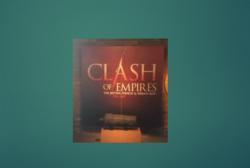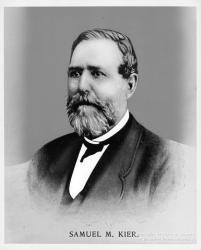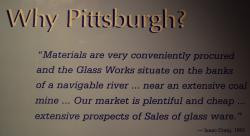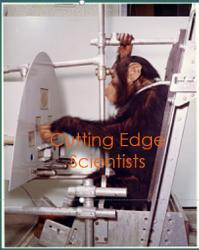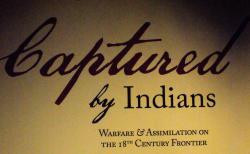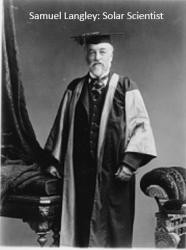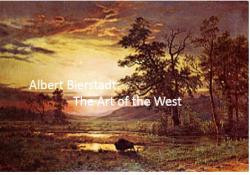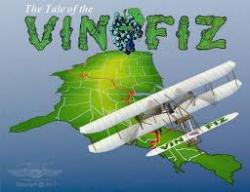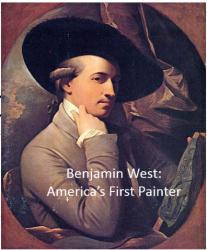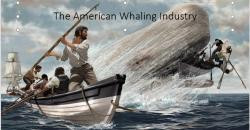Arthur Glaser's collections
Voyage of Discovery: Lewis & Clark explore Louisiana.
Images related to the Corps of Discovery. Most people think of the Lewis and Clark Expedition as one of geographic exploration. However, President Jefferson charged them to study ethnography, biology, zoology, meteorology, botany and geology. They were required to make detailed maps of their travels and keep a journal about their experiences. Sculptures, paintings and other forms of artwork have been included to illustrate the many interpretations of Lewis and Clark.<br />
 Arthur Glaser
Arthur Glaser
38
Runaway in an Unknown Land: The Underground Railroad in Western Pennsylvania
Prior to the Civil War, enslaved people had little chance of securing their freedom. There were rare cases of freedom being purchased by the enslaved individual or by some benefactor. Even rarer was the granting of freedom papers by the master. For those who desired to taste freedom, the choice of running was often the only viable choice. Runaways faced incredible dangers en route including the possibility of capture.
 Arthur Glaser
Arthur Glaser
29
Glass: One of America's First Industries
America's first colony, Jamestown, initiated glass production with the hope that it would be an important product in the mercantile trade with the mother country. Although, the production of glass was successful, the quality did not measure up against that of British producers and the glass business soon waned in Jamestown. At the end of the eighteenth century, Pittsburgh found that it had all of the raw materials to make high quality glass and imported skill glass blowers from England to begin full production. So glass preceded the production of steel and became Pittsburgh's first large scale industry.
 Arthur Glaser
Arthur Glaser
40
Cutting Edge Scientists
This learning lab focuses on some early cutting edge scientists and how their work affected mankind. This introduction is followed by a presentation of some very inquisitive researchers who are working projects that will affect our life in the near future.
 Arthur Glaser
Arthur Glaser
21
Captured by Indians: Warfare and Assimilation on the 18thC Frontier.
<p>After the Britains won the British, French and Indian War, the victors made promises to the native Americans that the former French claims would not be occupied by the English colonists. The Quebec Act forbade settlers to pass beyond the ridge of the Appalachian Mountains. Britain soon discovered that it was impossible to stop the settlers from crossing into Indian lands. The reaction of the native-Americans was swift and furious. Raiding parties killed and/or captured hundreds of these frontier farmers.</p>
 Arthur Glaser
Arthur Glaser
34
Copley & the Art of Revolutionary Figures
<p>This learning lab consists of portraits painted by John Singleton Copley, one of America's first painters. The subjects included all played a role either prior to or during the revolution.</p>
 Arthur Glaser
Arthur Glaser
14
Rodman's Guns
<p><br /></p><p>The five years of the Civil War are quite rightly considered a period of ordnance and artillery experimentation, development, and transition. The work of one man led, in fact, to the casting of one of the biggest guns ever built, even to the present day--a monstrous 20-inch muzzzleloader that fired a 1000 pound solid shot</p>
 Arthur Glaser
Arthur Glaser
16
Benjamin West: America's First Painter
<p>Benjamin West began painting in America during the late colonial period. His works represented a variety of styles. He was equally good at portraiture which was what most customers wanted and romantic renditions of battle scenes. Later in his career he devoted much of his time to Greek and Roman mythological themes.</p>
 Arthur Glaser
Arthur Glaser
25
American Whaling Industry
<p>In the early nineteenth century, America demanded a clean burning fuel that would supplant the candle as the primary tool for lighting in homes and businesses. Whale oil proved to be the answer. It was clean burning, odorless and more economical than candles. Hunting whales was adventurous and dangerous and it lured many young men to a life at sea. Whaling remained an important industry through the Civil War and began to decline with the discovery of oil and its by products at Drake's well and other sites in Western Pennsylvania.</p>
 Arthur Glaser
Arthur Glaser
30
Midnight Ride of Paul Revere
<p>Henry Wadsworth Longfellow wrote his famous poem, "The Midnight Ride of Paul Revere" during the American civil war. Since he was not an eyewitness to the ride, historians have found errors of substance in the poem. This lab focuses on what really happened that night, April 19, 1775.</p>
 Arthur Glaser
Arthur Glaser
21

